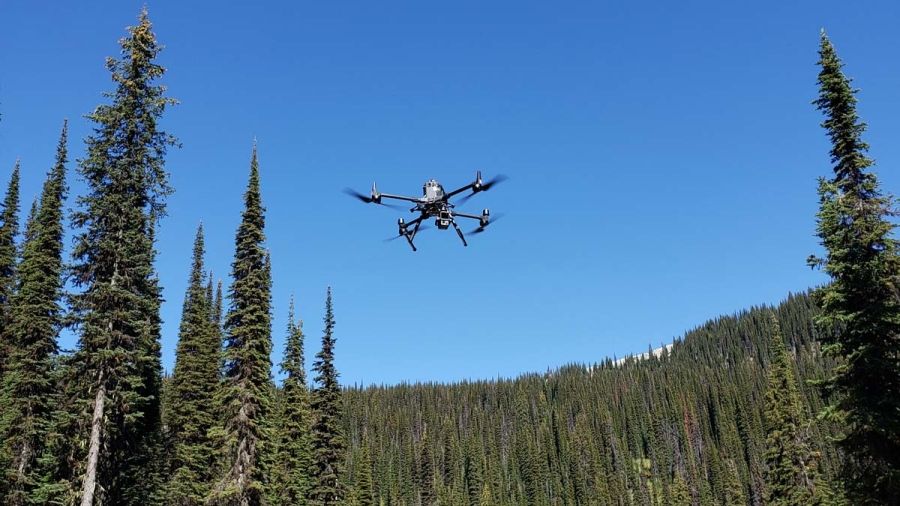
Marcus Friesen—a research intern with the GIS & Natural Resource Management team at Selkirk Innovates—is using remote sensing imagery to enhance the accuracy and detail of maps. He’s applying skills and knowledge he learned earning his bachelor's degree in Geographic Information Systems (GIS).
In a recent forest health project, Friesen applied machine-learning techniques to drone-collected imagery to distinguish between healthy and unhealthy trees in subalpine and mixed-species Kootenay forests. This research aids land managers in identifying the endangered species whitebark pine from other commercial tree species.
The project also focuses on detecting unhealthy trees before forest pests and pathogens spread, such as bark beetles or blister rust.
Friesen and the team, led by Dr. Brendan Wilson, developed integrative workflows for various technologies, including remotely piloted aircraft systems, LiDAR, multispectral and thermal sensors. They explored technological possibilities beyond ground-based surveys, demonstrating the finer degree of detail obtainable from remotely sensed imagery.
“Participating in this project, from data collection to processing and analysis, has been an amazing experience,” says Friesen. “I have greatly expanded my knowledge and understanding of GIS technologies and their applications in the forestry industry, including programming and machine-learning algorithms.”


